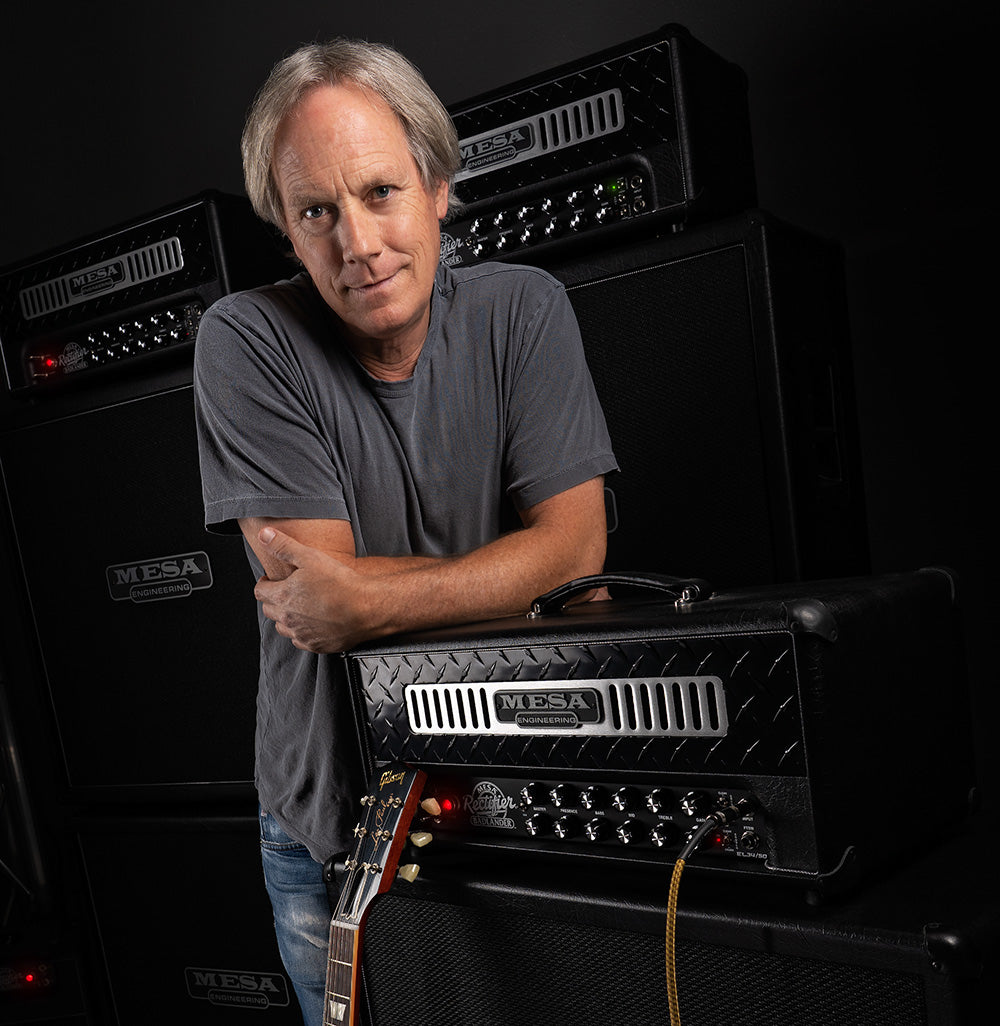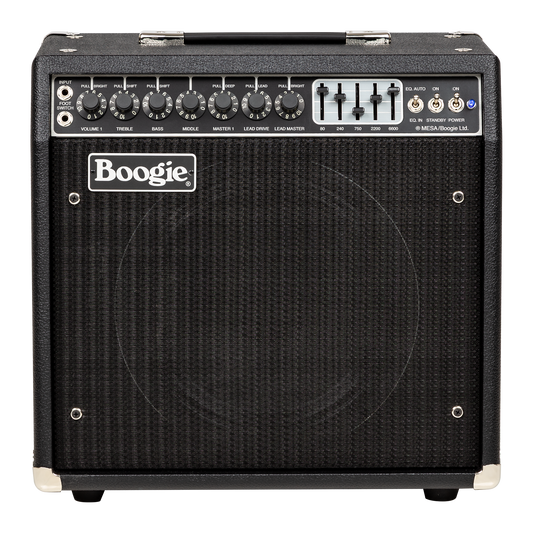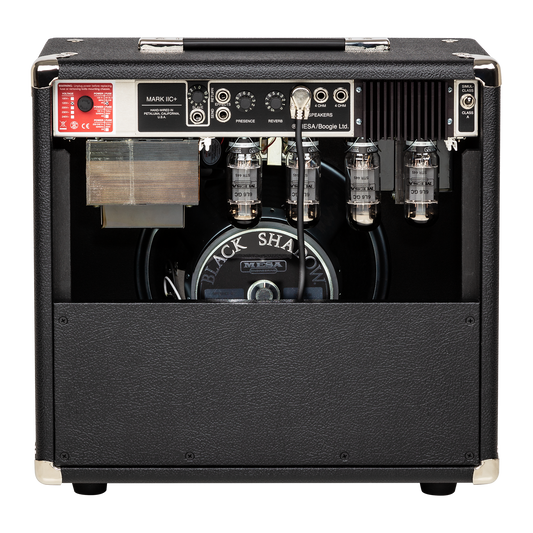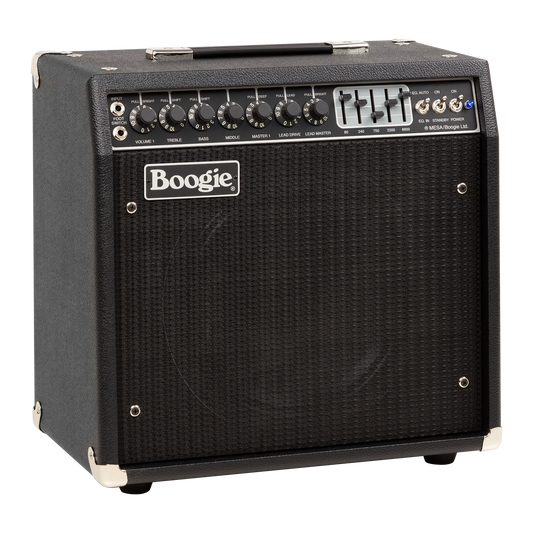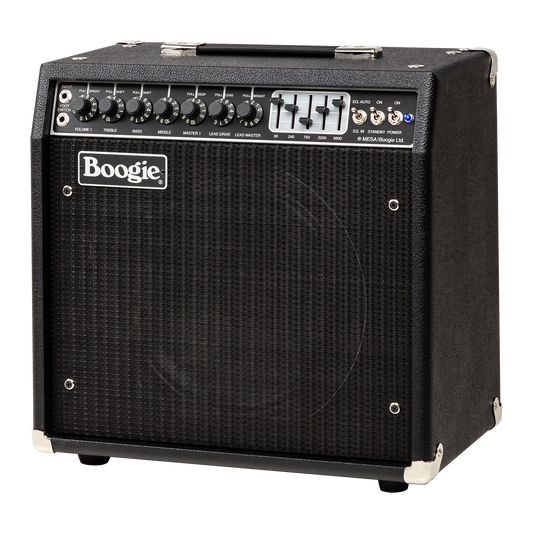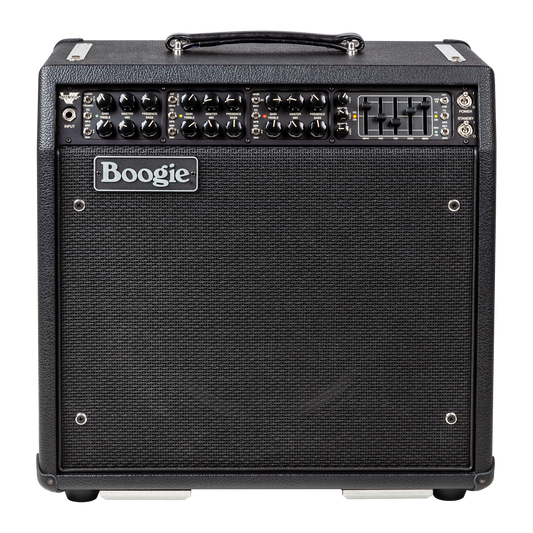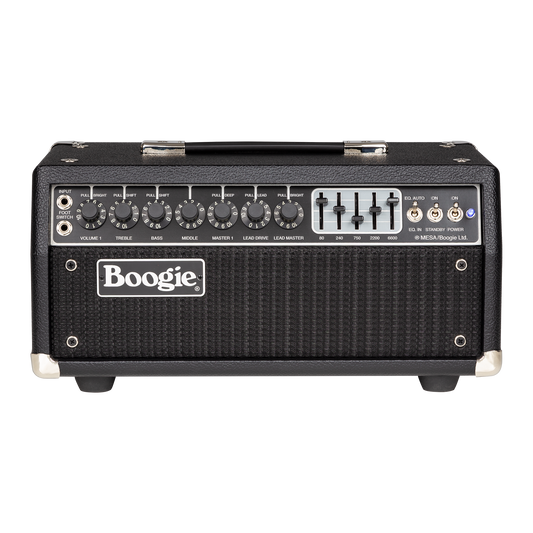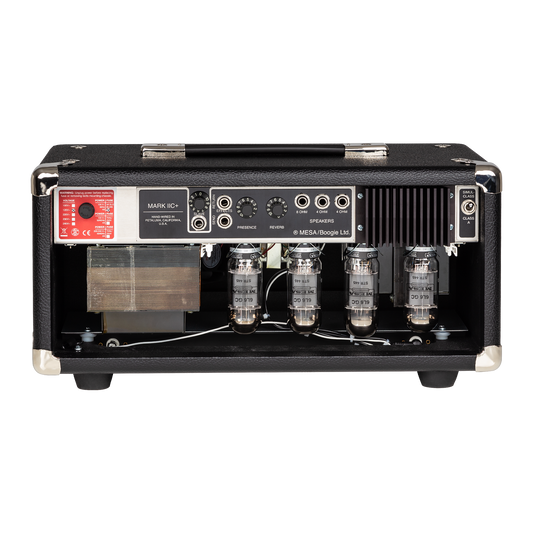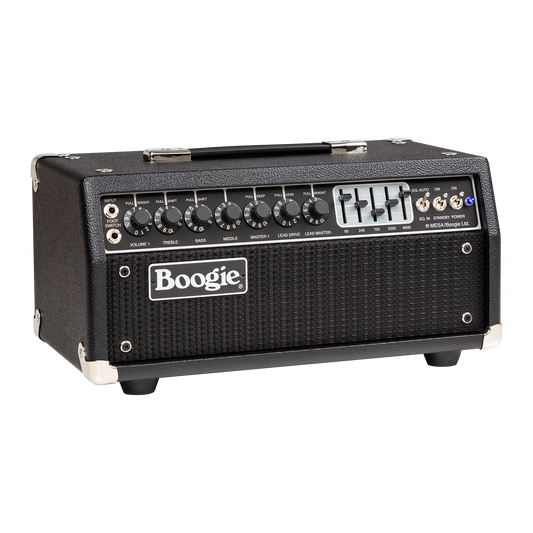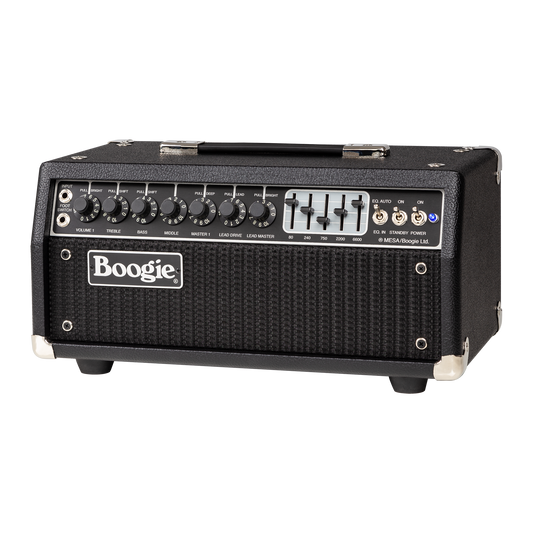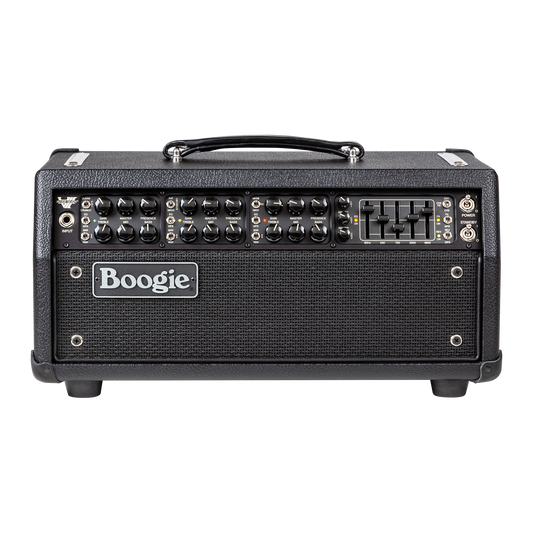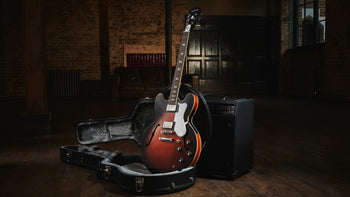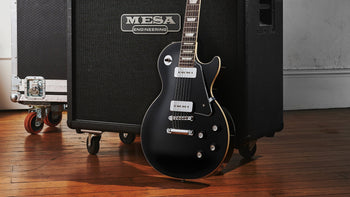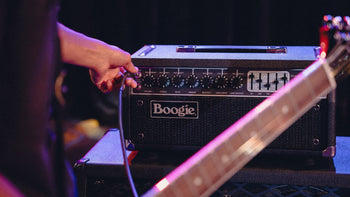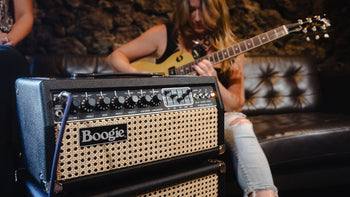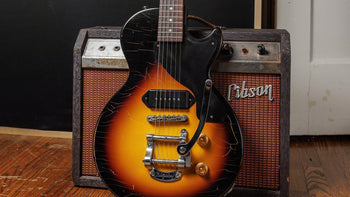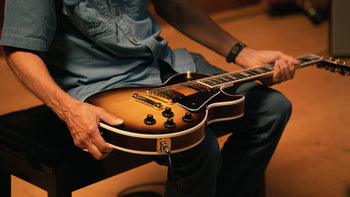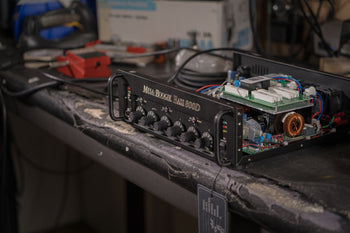Discover how these amps share a bloodline but diverge in feel, flexibility, and sonic character to serve different musical missions
At MESA®, we are frequently asked, “What’s the difference between the Mark VII and the Mark IIC+™? How do I know which one is right for me?” The answer is both simple and deep, but ultimately it depends on what your musical needs are and what your musical personality feels most comfortable driving. So, before we dive deep into features and architecture, attempting to identify your dream amp, let’s look at your musical leanings and needs.
Are you a player that tends to hover in a relatively small number of genres or styles, craves nuance in your sound, doesn’t mind tweaking in search of that last drop of honey in your tone, and requires all the tools, regardless of how deep they are, to get at it? Or are you a guitarist/stringed instrumentalist who travels through many musical contexts, needing versatility and instant access to sounds for them all, requiring the absolute best clean sounds possible, and can utilize a number of different overdrive sounds across a wide spectrum of gain and shape?
Within these opposite profiles are criteria that might quickly point you to one model or the other; however, the world isn’t black and white, and neither is tone. Hence, the IIC+ can be a very versatile and friendly-to-dial amp once understood, and a Mark VII is often chosen for just one or two of its seven incredible sounds, while the others ride along in the jump seat as bonus or “just-in-case” tools.
Meanwhile, while we ponder those personal needs, can you guess the matches from the questions above, generally speaking? The first description generally matches you with the Mark IIC+, while the second profile pairs you with the Mark VII. These are not concrete reasons for choosing one model or the other; rather, they are just suggestive factors that might help get you on the trail to the gold faster in some cases.
There are many factors that might eventually lead you to the best decision. Or the more fiscally responsible one, as the best decision is to own both eventually! It’s not as crazy as it might sound. You’d be surprised at the number of players we serve that own both models—even multiples in different configurations. However, for now, it’s back to Earth for guidance that might help a spouse or significant other in your life sleep better.
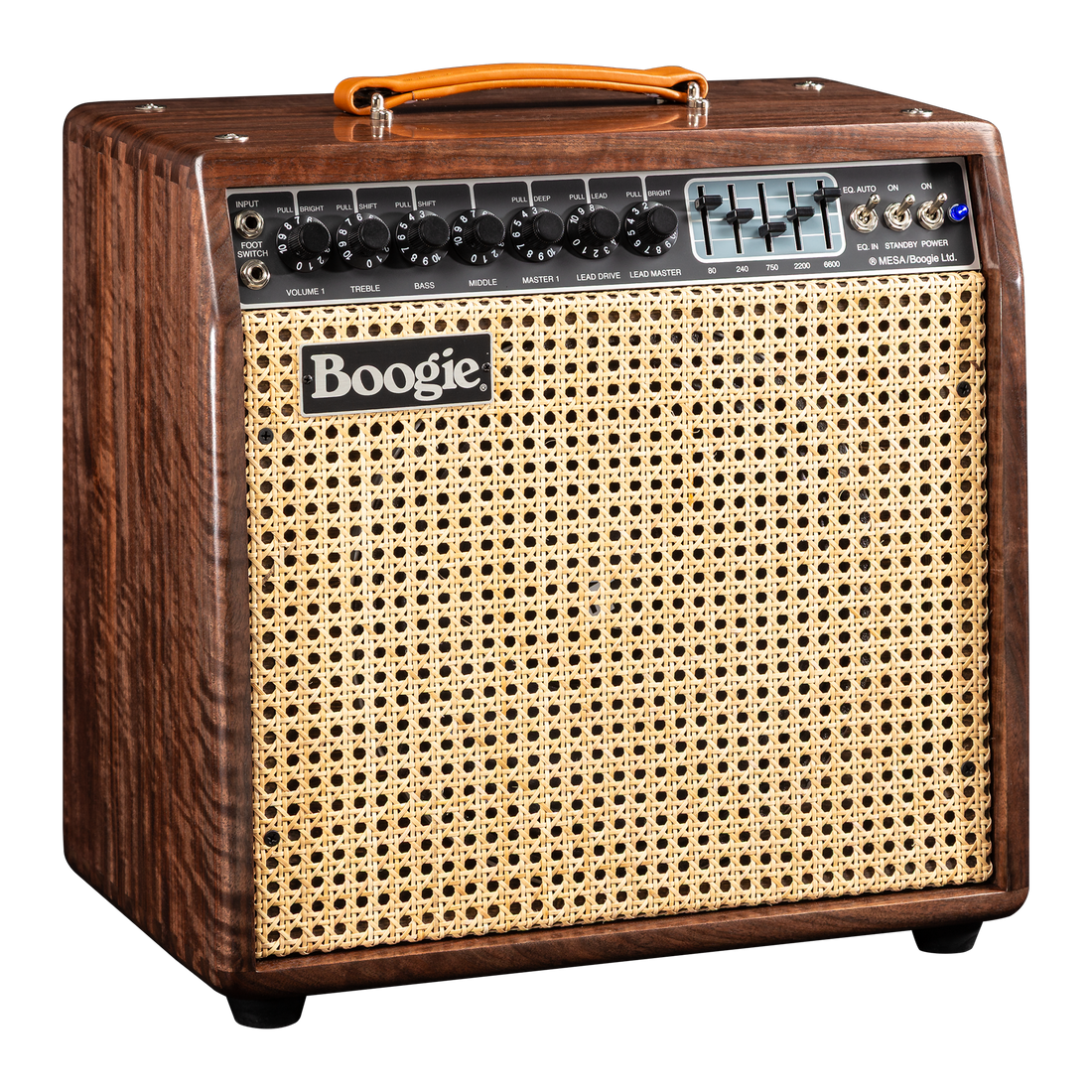 A Mesa/Boogie Custom Configured Mark IIC+ combo in Walnut Hardwood
A Mesa/Boogie Custom Configured Mark IIC+ combo in Walnut Hardwood
Though it occurred in reverse on the historical timeline, you can think of the Mark IIC+ as the expanded version of a Mark VII’s IIC+ Mode. Or if you prefer to look at it another way, a Mark VII’s IIC+ Mode is a simplified, easier-to-drive, abridged version of the Mark IIC+. All the incredible sound and feel are intact; it’s just served up more immediately with less chance for option anxiety and missed opportunity.
Either way you look at it, this edited version of the C+ Mode in the VII came about from years of feedback received from players who had trouble navigating the original Mark II (and III and IV) layout and a desire on our part to deliver that sound more quickly and with less confusion regarding which controls to set where and which pots to pull out.
One of the overarching differences between the two in terms of the fabled IIC+ Lead Mode, the most famous of all Mark sounds, is that the first gain control that determines the amount of gain in the first stage of the preamp, Volume 1, is adjustable in a Mark IIC+, whereas this control is removed altogether and instead hardwired to a specific setting in the Mark VII.
It happens to be a great setting, perhaps one of the best settings, overall. One where there is ample gain to achieve a full sound in both Modes, but not so much that it slows the attack and compromises the dynamics. Removing this Volume 1 control greatly simplifies the layout and removes some option anxiety for many while still placing it squarely in the middle of the most expressive range of the control (that is missing and internally hardwired) in this critical early gain stage of the preamp.
For some, however, there is benefit in being able to mine for nuances that serve individual things like the instrument’s pickups, your picking dynamics—technique, velocity, amplitude, et cetera—the tonal differences in minute movements of the Volume 1 control up or down, and the musical genre most frequented. On the Mark IIC+, there are myriad places, mere breaths on the control, that deliver increments of gain early in the preamp that shape not only the gain level, but also the tone—thin to thick, dark to bright, more dynamic to more compressed, hollowed-out to filled-in.
Musically speaking, you could think of these opposing nuances as traditional or modern in terms of how they compare to traditional amplifiers with lesser performance in terms of available gain. The lower the setting, the more the leaning toward “vintage” performance, where the sound is trimmed, brighter/more open, and has a broader dynamic range. The higher the gain setting, the more performance leans toward modern “high gain” performance, where the signal is more saturated and compressed, is thicker and wider, and displays less overall dynamic range in trade for increased sustain and overdrive.
Another difference between the two models appears in the omission of the Pull Bright switch found on the IIC+’s Volume 1 control. This pull pot affects not only clean sounds in the Rhythm Mode, but also the harmonic content in the Lead Mode. Its effect is more subtle in Lead, but it is still enhancing/blending upper harmonics. To make it more interesting yet, the setting of the Volume 1 control affects the strength or mix of harmonics in this Bright feature. Lower settings allow more harmonics to come through, higher settings diminish the effects of the Bright, until at a maximum setting on Volume 1, there are few harmonics in this range present in the mix. This is not a bad thing, though, as stylistically it tends to fit the criteria for both clean and overdrive sounds. Clean sounds need less gain and a brighter character; overdrive sounds need more gain and a warmer nature.
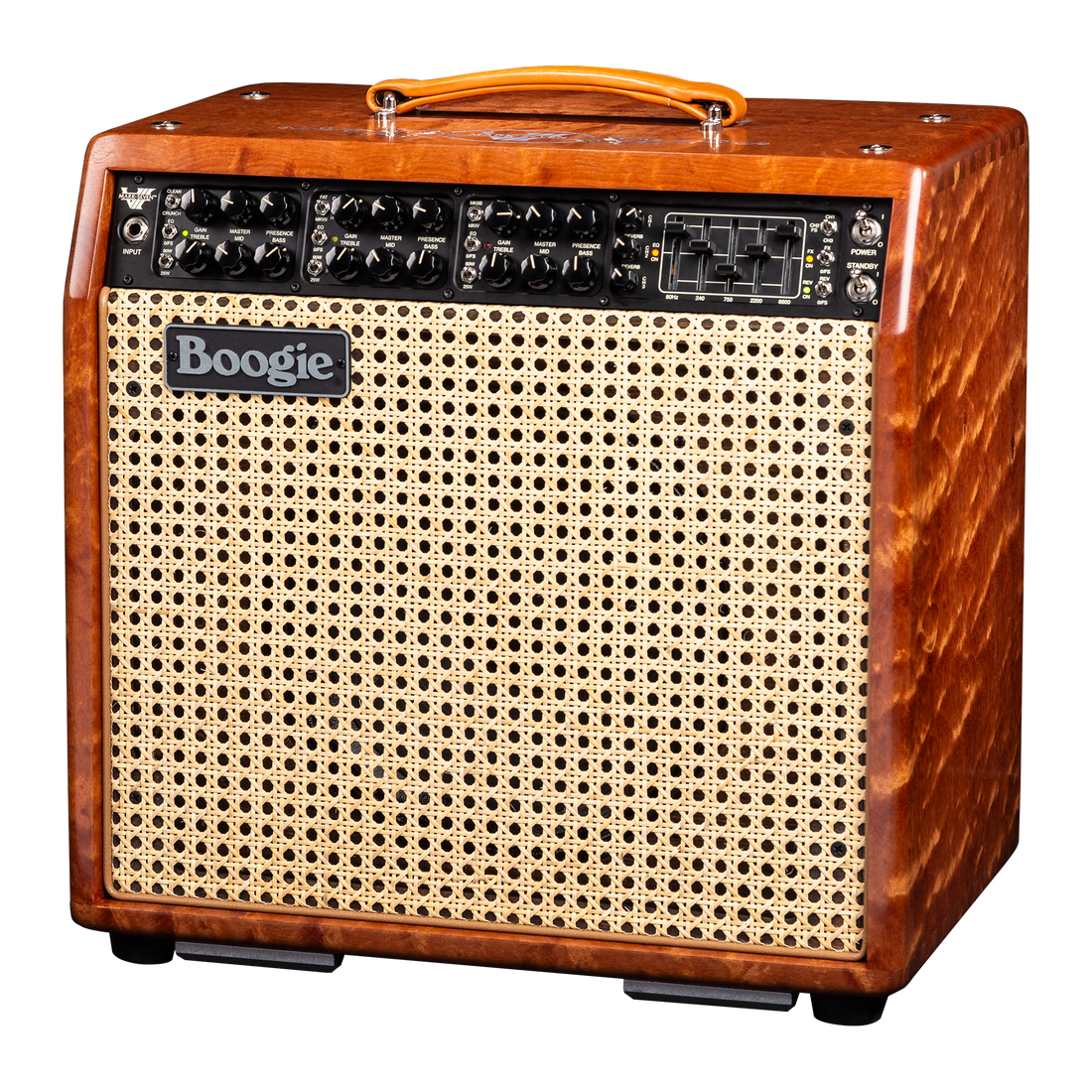 A Mesa/Boogie Custom Configured Mark VII with a Figured Makore Hardwood cabinet
A Mesa/Boogie Custom Configured Mark VII with a Figured Makore Hardwood cabinet
On the Mark VII, this pull pot switch is eliminated, along with the control itself, and instead hardwired to the pulled Bright setting. This allows the full range of upper harmonics to come through, adding a three-dimensional element—a halo—around everything. This again simplifies the Mark VII, but as you might expect, there is a trade-off in terms of ultimate versatility. The IIC+’s Bright setting can be easily triggered on and off for different guitars, pedals, or musical styles, whereas the Mark VII may require lower Treble, Presence, and even perhaps engagement of the Graphic EQ to land in similar territory for brighter guitars or some musical styles that require a warmer, darker character.
Along those lines, the difference between the two models in this area doesn’t end with Volume 1. On the Mark VII, all the Mark IIC+’s pull pot enhancement switches and Pull Shift switches appearing on its front panel are removed, preselected choices are substituted, and the Mode is hardwired to an optimum setting and/or voicing. This helps to deliver the best sound quickly, remove confusion, and limit questionable settings that could create or exacerbate settings conflicts and/or microphonic tube issues. Much like a governor on a super-tuned car engine keeps you closer to the safe zone RPM-wise and more in control of the vehicle, these hardwired pre-selections help prevent “poor driving” habits and help maintain a smooth and enjoyable playing experience with the Mark VII.
Another obvious and defining difference between the original Mark II (and III) layout and today’s Mark VII layout (and Mark Five’s before it) is that the VII gives you separate and dedicated clusters of controls (channels) for the optimization of its three (footswitchable) sounds among the seven performance Modes across its channels. In contrast, the Mark IIC+ shares just one set of controls across the two performance Modes (in its single channel). The versatility and ability to dedicate and adjust each sound independently, along with the total number of them in the Mark VII, is really the initial deciding factor for most players, one way or the other.
In trade for the instant access to more sounds and a simplified path to each of them on the VII, you sacrifice some ability to fine-tune them, the most iconic of them being the IIC+ sound. Each player will have their own perspective on how important the last bit of nuance, that last drop of honey in their tone, is for themselves; however, for most players using their amplifiers in performance situations, the Mark VII’s freedom and Mode to Mode authenticity is appealing to many and unrivaled in the world of tube amplifiers. However, circling back to the beginning of this discussion, if your needs are focused on one or two very specific things at a time and you need more surgical approaches to fine-tuning gain, tone controls, and overall feel, the Mark IIC+ is hard to deny.
One last comment on the two models: while they both are derived from the same Mark Series bloodline and share many aspects of the same original IIC+ circuitry, each is focused on its tasks and personas and optimized to deliver them most effectively. This means there are differences in the circuit boards and the layout of the Modes therein, and these differences, along with some physical differences in parts locations and inclusions for features, mean they have their own overall sonic characters.
The Mark VII is a bit fuller in the low end, rounder in its midrange, smoother in its top end, and more “organic” sounding all around. It possesses a very balanced signature, where lows, mids, and highs sit alongside each other comfortably and in harmony, and when played in its upper power range, its presence fills the room with mature authority. That said, it is a wonderful practice amp when at home with you or in your studio, as it always sounds rich and doesn’t get thin or buzzy at lower volumes.
The IIC+ is more aggressive and percussive sounding in the midrange, has more harmonic content up higher, and this gives solo sounds, especially single notes up high, fiery definition along with a soaring character all its own. Because of this increased and more complex harmonic content, the C+ can sound meaner and more beast-like for big, gained-up crunch/chording sounds as well. Its more stripped and urgent low-end, not at all thin or weak, makes it one of the tighter tracking amps out there, especially in the low end.
However, with high Volume 1 settings, the Bass control should be set low and with discretion for these styles. If it’s super-tight metal styles you’re playing, the percussive nature of the IIC+’s midrange, combined with this more urgent feel in the low end, is a wicked combination. Yet, for all its aggressiveness, with lower settings of Gain, Treble, Mid, and Presence, the IIC+ can also sound sweet and silky, portraying a completely different character for sounds in other genres you might overlook.
We could cover this ground, and more, for many pages—and we have in the owner’s manuals of these two Mark icons—however, the focus here is on delivering a compass heading for landing you in the right territory to explore one of these instruments in person and perhaps choose the best one for your needs. Should you be fortunate and find yourself at a dealership that is not sold out of one or the other, and you have the opportunity to explore both, seize the moment! We’re confident you won’t be disappointed. However, be warned: choosing one over the other may not be easy, as they are both incredible instruments with different strengths.
Meanwhile, to recap and provide a compass heading, let’s review this earlier point: The biggest difference between the two models in terms of the fabled IIC+ Lead Mode, most famous of all Mark sounds, is that the first gain control that determines the amount of gain in the first stage of the preamp, Volume 1, is adjustable in a Mark IIC+, whereas it is removed altogether and hardwired to a specific setting in the Mark VII. This fact, along with the two additional Channels available for instant access to other sounds in the Mark VII, really separates the two models, and you will likely know quickly which one calls to you.
Another summation that might help is this: A Mark VII serves up its magic—and a lot of it across a wide landscape—quickly, easily, and with little searching, whereas the Mark IIC+ gives you the full palette to paint your masterpiece in a narrower style of art with, hence you’ll need to be more patient and learn your colors and how they interact to arrive at your own brand of legendary.
Rest assured, whichever path you take to your own Boogie, it will be filled with moments that lead to years of inspiration and enjoyment as you grow into a relationship with it that equals that of your favorite guitar. Our amplifiers are designed to be instruments in every sense of the word. Over time, you will experience their value in terms of emotional connection and freedom of expression created from a symbiotic relationship that keeps growing as it keeps giving, just like it does with any fine musical instrument you form a bond with.
This is a big reason why Boogie players can rarely go back to just “an amplifier” and why our worldwide family has grown over the last 55 years that we’ve been faithfully serving musicians. This is our passion, and we invite you to experience it with us! We await your joining our global brother and sisterhood of tone with open arms and open minds, eager to explore how we can keep inspiring, improving our craft, and creating instruments that set players like yourself free.
From all of us at MESA/Boogie®, Thanks for your interest! And for the legions of musicians who have trusted us with their tone, thank you for allowing us to be your amplifier company and a part of your musical journey!
Explore the MESA/Boogie Mark IIC+ and Mark VII for yourself and discover which of these two musical instruments is right for you.

